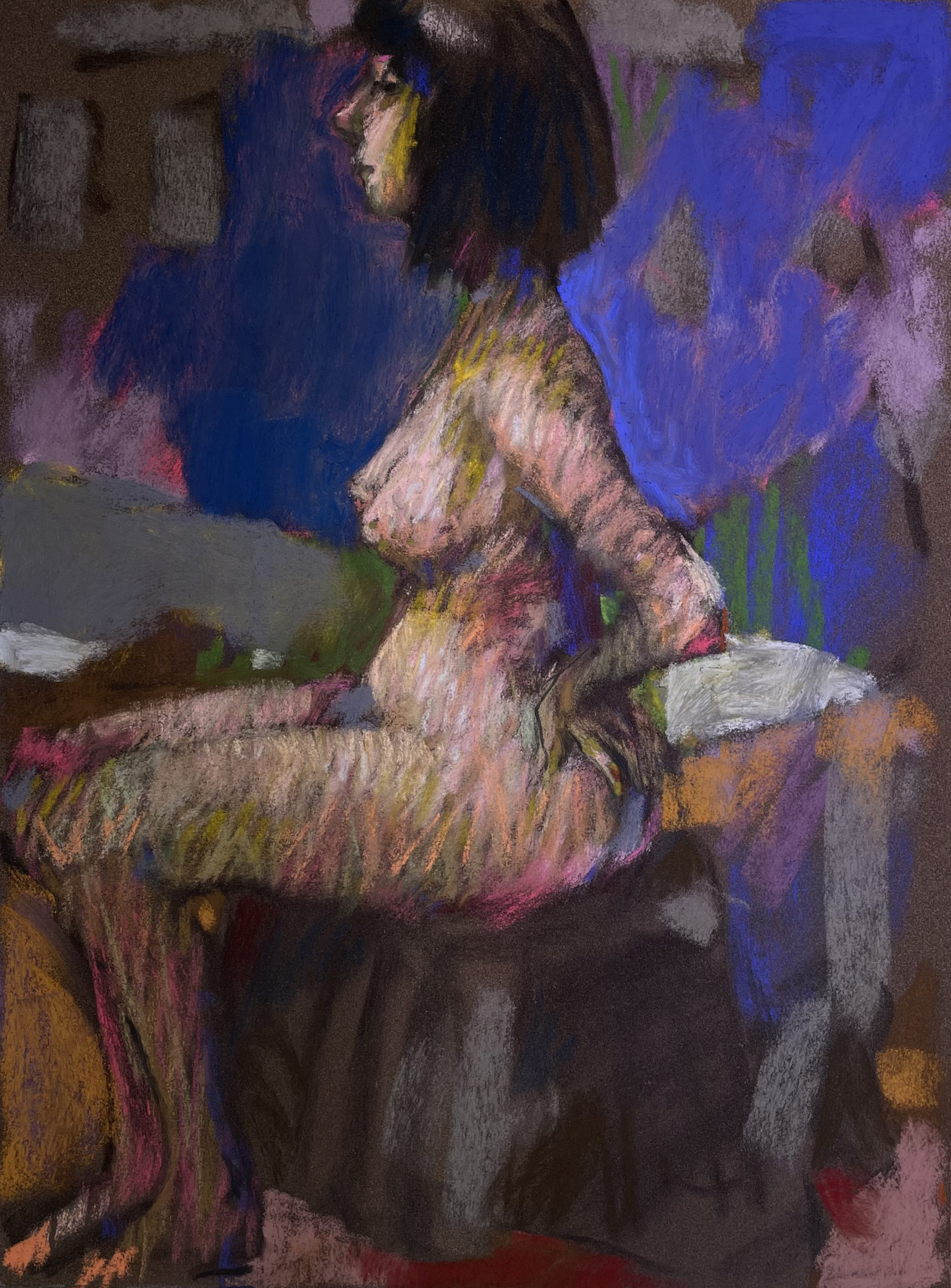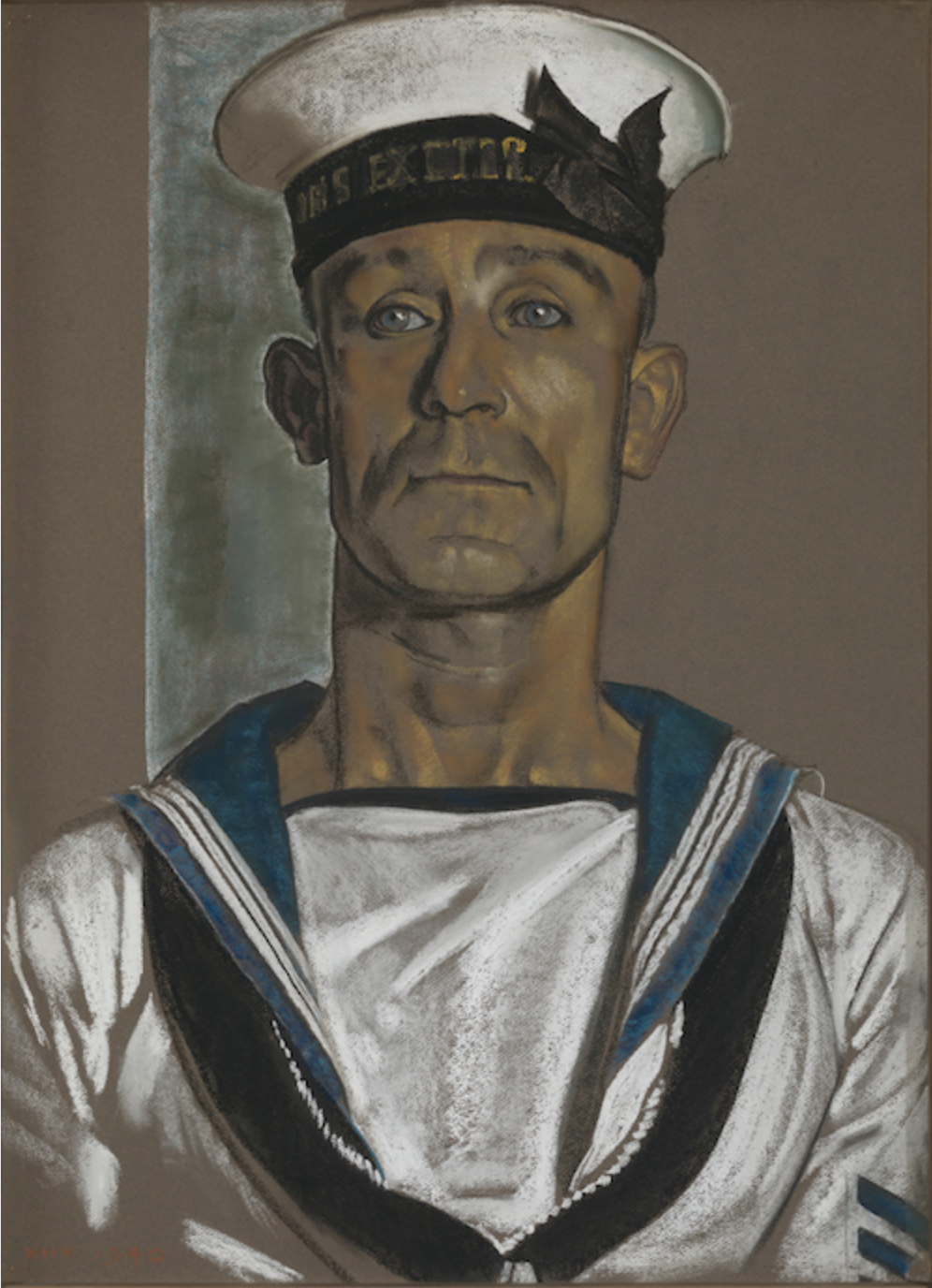Casey Klahn, Advisory Board member for Pastel Today, is up today to answer the question: What painting—either a master/historical piece or a contemporary work— or artist has made the most impact on you? And why or how? If you know Casey and his work, you may not be surprised to hear Henri Matisse’s Woman in a Hat pop up!
So let’s hear what Casey Klahn has to tell us.
~~~~~
My favorite artwork by a master, at the moment, is Woman with a Hat by Henri Matisse. Done in 1905, this painting ushered in the first Modernist movement, Fauvism, and with this, it turned the epoch of art as we know it from the Renaissance Era to the Modern Era. And, here we are today! No great earthquake has dislodged the visual world like those two movements.

Details of what and how the painting impresses me.
This painting is a portrait, and many turning point artworks are from the portrait genre. Perhaps portraits frame our experiences best as humankind; they tell us where we are and what we look like at certain junctures of time.
The portrait is not lit in a traditional way, but rather is a type of light called ambient lighting. Matisse is introducing the concept of colour versus light. I know, I know: over one’s head. Well, let’s say the light is coming out of her. Matisse is famous for once saying that a painting should generate its own light. This makes sense if you remember the truth that light doesn’t paint pictures: colours do. Put another way, Cezanne said that one cannot paint with light – only with colour.
Matisse continues to challenge the viewer by using unprimed or barely primed canvas, which makes me think more closely about the surface the painting is executed upon. In fact, Woman in a Hat is purposefully about the painting surface and process, and sacrifices finish and “good style.” In everything you do with art, one thing sacrifices another. Be gone naturalism/ welcome the new!
Now, the colours. Matisse uses big patches of purer colours – unmodulated and unmixed. Gone is the era of brown mud. Do you see how this makes the point that pigment itself has merit, versus artifice and finish? The Fauves, of whom Matisse was the leader, promoted both colour and primitive brush strokes. This puts an end to illusion and finish.

Certainly, Matisse has begun Woman with a Hat using his wife as a model. She sold hats for a living, while he used the time-honoured devices of paint, canvas, and brush. In this brave painting, he says, Time for the next thing. You seem to have perfected the old one!
My works resulting or affected by Woman with a Hat?
Well, everything, really.
I say this because I feel Woman with a Hat is the beginning of an epoch. Art became less about natural perspective and more about intrinsic things within art. Less about ARTISTS and more about ART. The Modern era, which begins in 1905 with Matisse’s gang of Wild Beasts, changes everything. However, to put a finer point on this, let me offer a small selection of my works that I consider art forward. They are pointedly not about the natural world and more about the painting itself.
For years I couldn’t understand how to apply Matisse’s work to my own practice. One might as well leap out a window a hundred feet above the ground; it’s an impossibility to approach Matisse. I still look at his work with awe and wonder at what he was doing, but when I do “get it,” I find that very fun (and challenging).
I am asked to write some text about what Matisse influences appear in my work, or what do I feel I have applied from his masterworks. What follows are some images and just some brief comments. Keep in mind I wouldn’t write this at all if it weren’t for the fact that many artists have “sat at the feet” of Matisse, and been influenced: Richard Diebenkorn, Sean Scully, Peter Max, and David Hockney to name just a few. To the extent that Matisse changed everything that came after him, some influence is inevitable.

Patterns of colour throughout, at a level of abstraction that make it obvious that pattern and colour are promoted above form and space. New types of technique, which Matisse held up as imperative to his practice. He said that artists invent new tools.

This was a demo work for an online workshop, and I was aware that Matisse was always using the still-life motif to express his colourful ideas. He did respond to the Cubist style by skewing the perspective of things, as I have tried to do with my table edges and angles. I have used intense tertiary types of red to contrast with intense yellows, and the reds recede in space because they are weaker than the yellows. There are some value plays at work, with lighter things in front of darker things.

Matisse’s influence is seen here in the way I am using full-intensity hues to compare one against the other. Matisse said that colour possesses its own beauty.

This is my attempt to continue the series of Odalisques that Matisse and many before him made. This work uses black as a critical design element, and masses colours to amplify their force.

This pastel borrows an Edgar Degas pose but is done from life. Degas and Matisse both painted at the same time (they overlapped, with Degas’ career ending as Matisse was beginning his) but Matisse was younger. He took art farther away from form and subject than Degas, who did begin to do the same, as an Impressionist. I don’t use strict complementary hues, but I do use pure hues and good luck finding a colour stronger than blue. This model has such good posture that it serves the motif of a formal work about design. The colour design, and shape and balance designs, are enhanced by the position of the figure as her head hangs directly down from the top middle of the work. This artwork announces itself as a work that is interested in the things of art (formal elements).
I’m never going to be done trying to decipher Henri Matisse!
~~~~~
Ahhhh Casey, thanks so much for this in-depth exploration of how Matisse’s Woman With A Hat (and Matisse in general) has influenced you and your work!
________________________________________________________________________
Art for Remembrance Day…
For this day in 2019, respecting the meaning of the day, I wrote a blog about three portraits by Eric Kennington, portraits of men in the military. In it, I did some close-up exploration of the expressive and character-catching paintings.
Here’s one of the portraits. Powerful isn’t it?!

If you’re interested in seeing the other portraits and reading about the details I point out, go ahead and click here.
And that’s it for this time,
Gail



